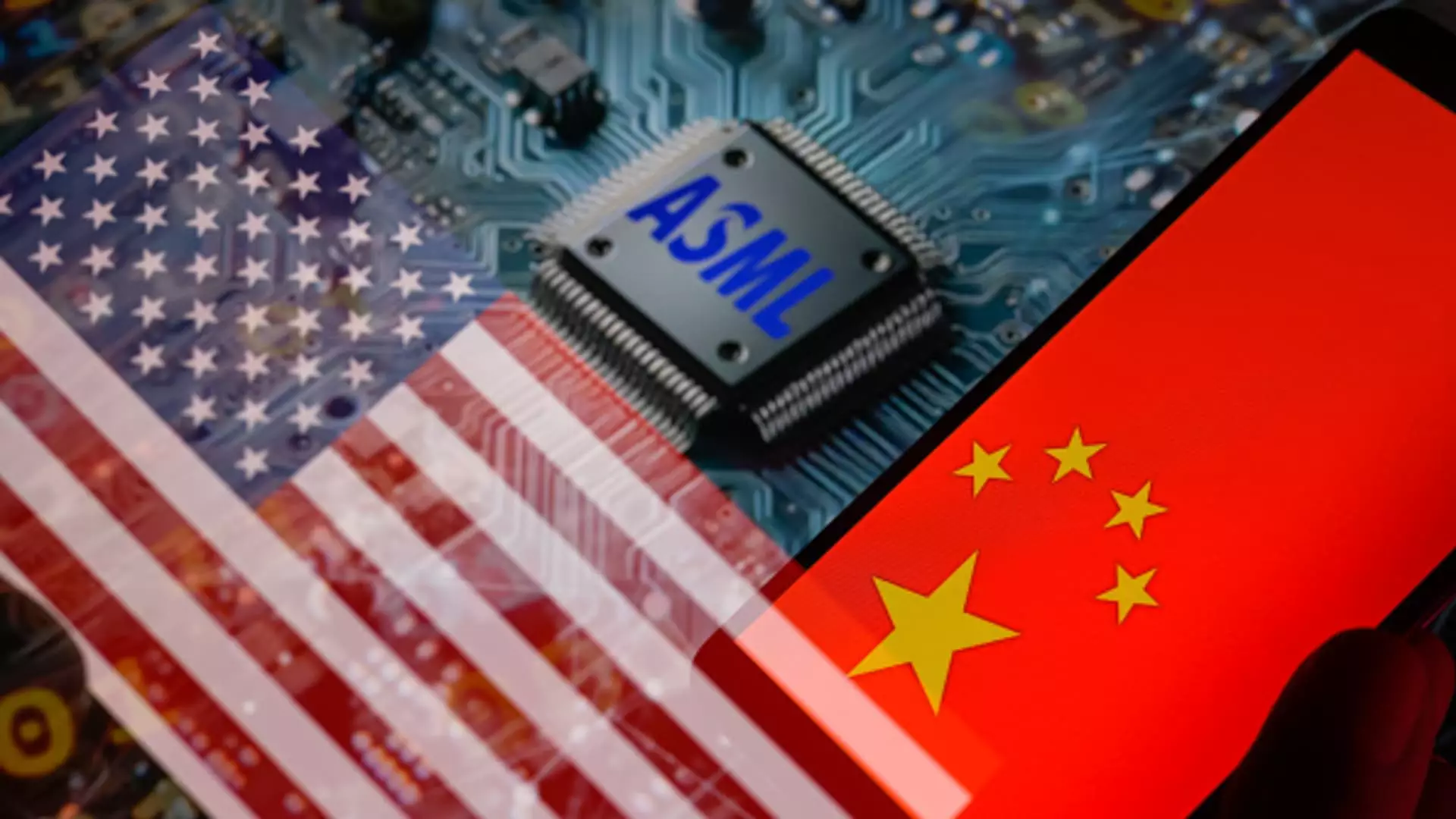ASML, a leading Dutch company in the semiconductor manufacturing sector, recently revealed the ramifications of U.S. export restrictions on its business in China. This announcement, made during its earnings report, indicates significant potential shifts in its revenue streams as geopolitical tensions reshape the global semiconductor landscape. The company’s guidance for the future has become more conservative, likely signaling a shift in its reliance on the Chinese market for growth.
ASML’s updated sales forecast, estimating net sales for 2025 to be between 30 billion and 35 billion euros ($32.7 billion and $38.1 billion), has raised eyebrows among investors. This range is notably lower than previous expectations the company had set. Although their third-quarter net sales reached 7.5 billion euros, surpassing projections, the disappointing 2.6 billion euros in new bookings sent ASML’s shares tumbling. The stock plummeted by as much as 16% on the day of the announcement, translating into a loss of over $50 billion in market capitalization, demonstrating the acute sensitivity of investors to news of weakened demand.
The notable shortfall in ASML’s bookings compared to expectations can be attributed to diminishing orders from critical clients such as Intel and Samsung. Analysts suggest that these reductions stem from significant geopolitical strains, as companies recalibrate their production plans amidst evolving restrictions. The perception of a weaker order book is concerning, indicating potential headwinds that ASML may face as it navigates an increasingly complex landscape.
Historically, China has played a vital role in ASML’s revenue generation, accounting for an impressive 29% of sales previously. In light of current dynamics, however, ASML anticipates that this figure will decline to approximately 20% by 2025. This contraction highlights the vulnerabilities associated with over-reliance on a single market, particularly one embroiled in trade disputes. As geopolitical tensions escalate, ASML’s ability to maintain robust sales in China appears compromised, adding another layer of complexity to its operational outlook.
In anticipation of U.S. export restrictions, Chinese clients have been ramping up purchases of ASML’s less advanced deep ultra-violet (DUV) machines. While this stockpiling initially bolstered sales, the long-term sustainability of such demand is questionable given the evolving regulatory environment. Notably, ASML has never been permitted to sell its cutting-edge extreme ultraviolet (EUV) machines to Chinese customers, further complicating the situation. As China’s need for advanced technology grows, the inability to provide the latest machinery places ASML at a significant disadvantage against competitors.
ASML’s Chief Financial Officer, Roger Dassen, suggests that the company may pivot towards a “more normalized” business in China, implying that the period of extraordinary growth in sales may soon level off. With projections indicating a 25% to 30% reduction in sales to China, ASML must strategize effectively to offset this anticipated decline. Analysts at Bank of America have predicted a staggering 48% drop in revenue associated with Chinese customers, a figure that exceeds their earlier expectations and reinforces concerns about the sustainability of prior growth patterns.
The broader implications of ASML’s challenges extend beyond its corporate earnings. The semiconductor industry is deeply interconnected, with firms like Nvidia and Taiwan Semiconductor Manufacturing relying on ASML’s machines to produce advanced chips. If demand from China wanes, it may trigger a ripple effect on the global ecosystem, challenging other players in the sector as production capabilities are compromised. As firms adapt to a changing marketplace, the focus may shift toward developing localized supply chains and diversifying technological partnerships.
As ASML grapples with substantial challenges arising from U.S. export restrictions and the shifting landscape of Chinese demand, the firm’s stringent reliance on one of the world’s most crucial markets poses significant risks. The anticipated contraction in revenue necessitates a strategic reevaluation, highlighting the fragility of the semiconductor supply chain amid geopolitical pressures. For ASML, this intersection of technology and international relations is not merely a backdrop; it represents an unfolding narrative that will shape the company’s future trajectory. As the semiconductor industry evolves, so too must ASML, adapting to the new realities that are defining global trade and technological access.

